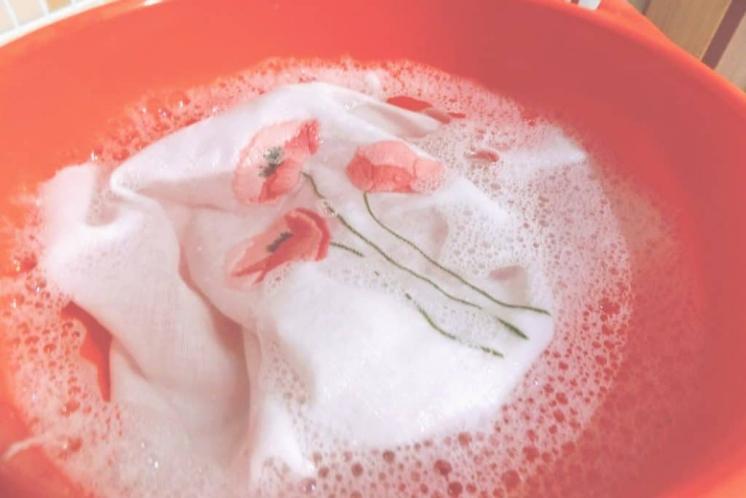Introduction
Embroidery is a centuries-old craft that involves using thread or yarn to create intricate patterns or designs on fabric. The process of embroidery can be done by hand or using a sewing machine, and it can be used to decorate a wide variety of items, including clothing, linens, and home decor. Embroidery is known for its delicate and intricate designs, and it can add a touch of elegance and sophistication to any project.There are several different types of embroidery, including cross-stitch, crewel, and smocking. Each type of embroidery has its own unique techniques and styles, and they can be used to create a wide variety of designs. Whether you are a beginner or an experienced sewer, embroidery is a versatile craft that offers endless possibilities for creativity.
Embroidery on clothes is a beautiful and delicate art form that adds a touch of elegance and sophistication to any outfit. However, it can be quite frustrating when the embroidery on your favorite clothes starts to fade, fray or even come off completely. Protecting embroidery on clothes is essential to keep it looking new and fresh for as long as possible. In this article, we will discuss some tips and tricks on how to protect embroidery on clothes and keep it looking as good as new.

1.Read the Care Label
The first step in protecting embroidery on clothes is to read the care label. Before attempting to clean or store your embroidered clothing, it is essential to read the care label. Most clothing items have a care label that provides information on how to wash, dry, and iron the garment. The care label will also indicate whether the embroidery on the garment can be machine washed or if it requires hand washing. Following the care instructions on the label will help prevent damage to the embroidery and ensure that it lasts as long as possible.

2.Hand Wash Your Clothes
One of the best ways to protect embroidery on clothes is to hand wash them. Machine washing can cause the fabric to shrink, pull, and even tear, which can damage the embroidery. Hand washing is a gentler method that is less likely to cause damage to the embroidery. To hand wash your clothes, follow these steps:
- Fill a sink or basin with cool water and add a small amount of mild detergent.
- Gently agitate the garment in the water, being careful not to rub or scrub the embroidery.
- Rinse the garment thoroughly with cool water to remove any soap residue.
- Gently squeeze out excess water without twisting or wringing the fabric.
- Lay the garment flat in a single layer to dry away from direct sunlight and heat sources.

3.Use Mild Detergents
If you must use a washing machine to clean your embroidered clothes, use a delicate wash cycle. Harsh detergents can strip the color from the fabric and damage the threads used in the embroidery. Look for detergents that are specifically designed for delicate or hand-washable items, as they will be gentler on your clothing. A delicate wash cycle is designed to minimize friction and agitation, which can help prevent damage to the embroidery. Place the embroidered garment in a pillowcase or laundry bag to protect it from snagging or getting tangled during the wash cycle. Use a mild detergent and avoid using bleach or fabric softeners, as these can damage the embroidery over time.
4.Use a Stain Remover Sparingly
Stain removers can be useful in removing stubborn stains from embroidered clothes, but they can also damage the embroidery over time if used excessively or improperly. To protect your embroidered clothes from stain removers, test a small, inconspicuous area of the garment before applying the product to the entire stain. Use a mild stain remover that is specifically designed for delicate fabrics and follow the instructions carefully. Avoid rubbing or scrubbing the stain, as this can damage the embroidery. Rinse the garment thoroughly with clean water after treating the stain and lay it flat to dry.
5.Avoid Ironing Directly on the Embroidery
Ironing is another important step in protecting embroidery on clothes. However, it is important to iron the garment with caution to avoid damaging the embroidery. Always use a low heat setting when ironing an embroidered garment, as high heat can melt or scorch the threads and fabric. Place a pressing cloth over the embroidery before ironing to protect it from direct heat. Move the iron in a smooth, circular motion to avoid pressing too hard on any one area. Avoid ironing directly over metal zippers or buttons, as they can leave marks on the fabric.
6.Store Your Clothes Properly
Proper storage is essential for maintaining the quality and appearance of your embroidered clothing. Proper storage is essential to protect embroidery on clothes and keep them looking new for as long as possible. Here are some tips for storing your clothes:
- Hang your clothes on padded hangers to avoid stretching or distorting the fabric.
- Fold your clothes neatly and store them in a cool, dry place away from direct sunlight and moisture.
- Avoid stacking heavy items on top of your embroidered clothing, as this can cause creases and damage to the threads.
- Use acid-free tissue paper or archival-quality storage boxes to protect your clothes from dust and other environmental factors.
7.Be Mindful of Moisture and Humidity
Moisture and humidity can cause damage to your embroidered clothing over time. To protect your clothes from these elements, consider using a dehumidifier in your home or storing your clothes in airtight containers when not in use. Additionally, avoid hanging your clothes in damp areas, such as bathrooms or laundry rooms, as this can promote mold growth and damage the fabric.
8.Avoid Excessive Sunlight and Heat
Excessive sunlight and heat can cause fading and discoloration of embroidery over time. To protect your embroidered clothes from sunlight and heat, store them in a cool, dry place away from direct sunlight and heat sources such as radiators and heaters. If you must wear an embroidered garment outside, try to avoid exposing it to direct sunlight for extended periods of time. If you notice any signs of fading or discoloration on your embroidered clothes, consider having them professionally cleaned by a dry cleaner who specializes in delicate fabrics.
9.Consider Professional Cleaning
If you are unsure about how to clean an embroidered garment or if you have tried all of the above methods without success, consider having it professionally cleaned by a dry cleaner who specializes in delicate fabrics. A professional cleaner will have access to specialized equipment and cleaning products that are designed to safely and effectively clean embroidered clothes without damaging the embroidery. Before sending your garment to a professional cleaner, make sure to inform them of any special care instructions or concerns you may have regarding the embroidery on the garment.
10.Avoid Excessive Wear and Tear
While it may be tempting to wear your favorite embroidered clothing all the time, excessive wear and tear can cause damage to the threads and fabric over time. To extend the life of your clothing, consider rotating your wardrobe and only wearing your embroidered items on special occasions or when they are truly needed.
11.Maintain Regularly
Maintain regularly is essential for protecting embroidery on clothes. Be sure to check the embroidery regularly for any signs of damage, such as loose threads or fading colors. If any damage is detected, it is important to repair it promptly to prevent the damage from becoming worse. Additionally, it is a good idea to periodically reapply a protective spray to maintain the embroidery's appearance and protect it from damage.
12.Repair Any Damage Promptly
If you notice any damage to your embroidered clothing, such as frayed threads or loose stitches, repair it promptly to prevent further damage. You can either sew the damaged area yourself or take it to a professional tailor for repairs. Addressing minor issues early on can help prevent them from becoming more significant problems down the line.
13.Enjoy Your Embroidered Clothing with Care
Finally, remember to enjoy your embroidered clothing with care and appreciation for the artistry and craftsmanship that went into creating it. By following these tips and treating your clothing with respect, you can help ensure that it remains beautiful and vibrant for years to come.
Conclusion
In conclusion, protecting embroidery on clothes requires a combination of proper care, storage, and maintenance techniques. By following these tips on how to protect embroidery on clothes, you can keep your embroidered clothing looking as new as possible and enjoy its beauty for many years to come. Remember to always read the care label, wash your clothes by hand, use mild detergents, use a stain remover sparingly, avoid ironing directly on the embroidery, store your clothes properly, be mindful of moisture and humidity, avoid excessive sunlight and heat, consider professional cleaning, avoid excessive wear and tear, maintain regularly, repair any damage promptly, and enjoy your embroidered clothing with care.
Post time: Dec-19-2023





